#IBM 1620
Explore tagged Tumblr posts
Text
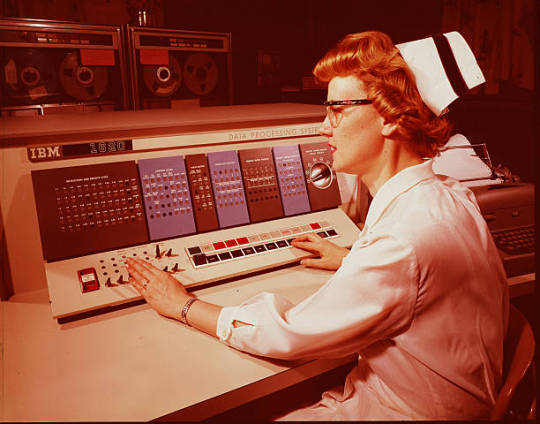
A nurse at an experimental nurse's station tests an IBM 1620 for use at the Akron Children's Hospital, Akron, Ohio, 1966.
Photography: Charles E. Rotkin
#science#technology#computers#medicine#photography#photojournalism#nursing#IBM#IBM 1620#Charles E. Rotkin#Akron Children's Hospital#Akron#Ohio#USA#1966
746 notes
·
View notes
Text

The IBM 1620 computer from 1959 was billed as an inexpensive system for scientific work. Interesting machine from an architectural standpoint, having variable word length decimal (non-binary) words, and using memory lookup tables to do addition and subtraction rather than a dedicated arithmetic logic unit (ALU).
The lack of hardware for basic math functions earned the machine the nickname CADET :
"Can't Add , Doesn't Even Try."
83 notes
·
View notes
Text
Mitchellaneous: Hip Kitty Jazz & Fondue


I’m a talented amateur: Joseph Pujol aka Le Pétomane was a professional fartist. He had remarkable control of his abdominal muscles which enabled him fart at will. Highlights of his stage act involved sound effects of cannon fire and thunderstorms, as well as playing “’O Sole Mio” and “La arseillaise”. Active 1894-1914.

GIFs of Madeline Kahn in “History of the World Part 1”

Astounding Stories of Super Science 1930

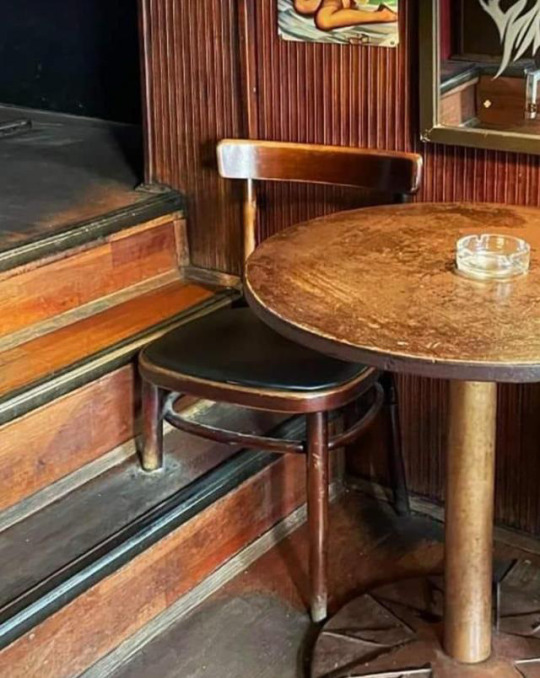
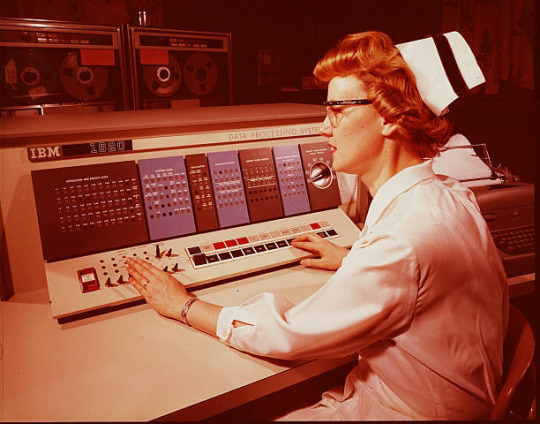
A nurse at an experimental nurse’s station tests an IBM 1620 for use at the Akron Children’s Hospital, Akron, Ohio, 1966.
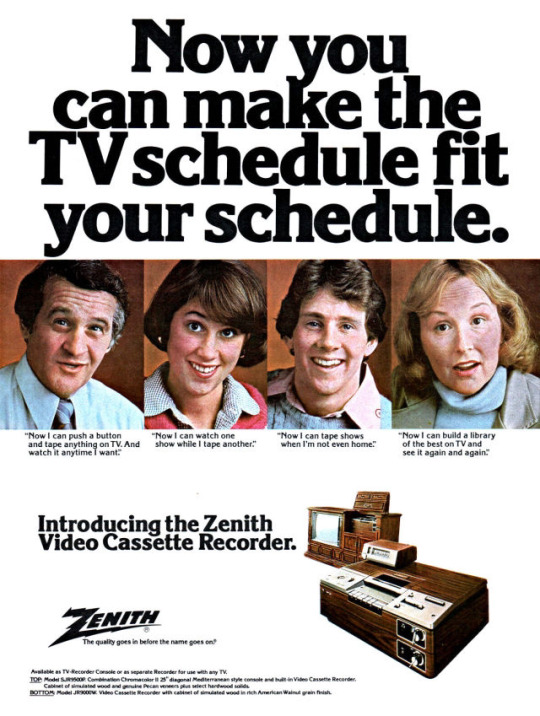
Zenith Corp, 1977
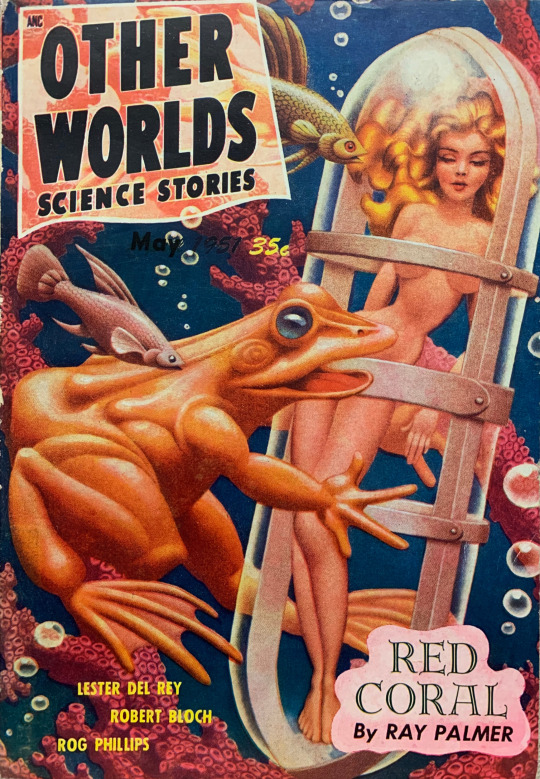
“Red Coral” by Ray Palmer, Other Worlds Science Stories, May 1951. Cover by Hannes Bok



On Reddit: “1979 - my middle school bus driver was the coolest”

Osborne I (1981)
9 notes
·
View notes
Note
i know the answer should be obvious, but im curious ...
But there any feminine/female computers ?
Sorry about dropping an ask about the puter men again
Yes! There's quite a few computers I have basic ideas for but just haven't drawn yet.
To start with, IBM 1401! She's one of the few fully operational and interactive pieces at the computer history museum currently, so I think she'd have kind of a teacher's spirit. However, she is pretty mischievous when not on the clock.
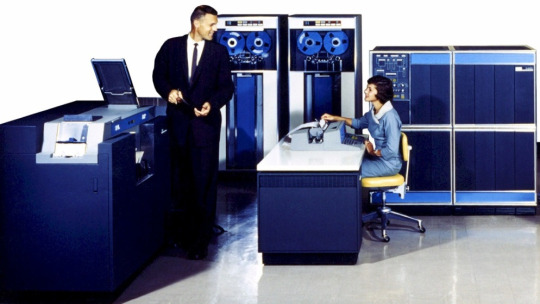

Next would be IBM 650. She's married to 705, and their kid is the 7070! (Because this one was specifically made to take over for those two and yet couldn't read what either of them could and completely flopped </3) She's a bright and cheerful worker and she also has roller skates since the computer itself is on wheels.

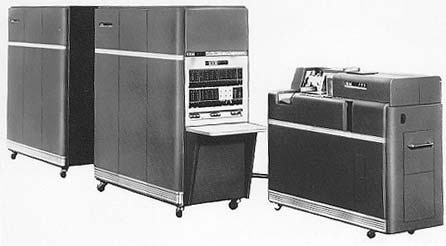
Next is IBM System 360. The absolute top of the game, she's basically the leader of all things IBM mainframes up to the 70's. Iconic, flashy, and a powerhouse of compatibility, she can do more than most of the others can and she knows it. She's strict but in that way that's necessary to keep everything running smoothly. Everything would just about fall apart without her, and she and Univac 1 are forever locked in a rivalry.
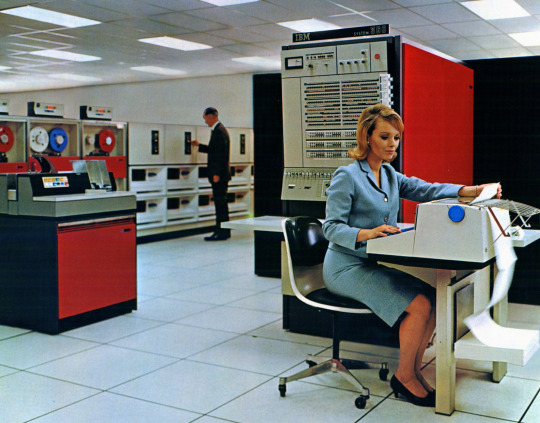
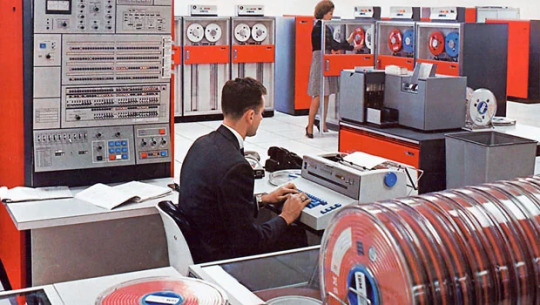
In addition to this, her successor System 370 is actually much more mellow and laid back. She does things a lot quieter, but with more efficiency. She finds 360's manic anger almost endearing and the two have coffee together often.
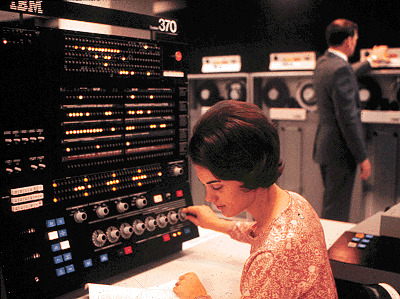
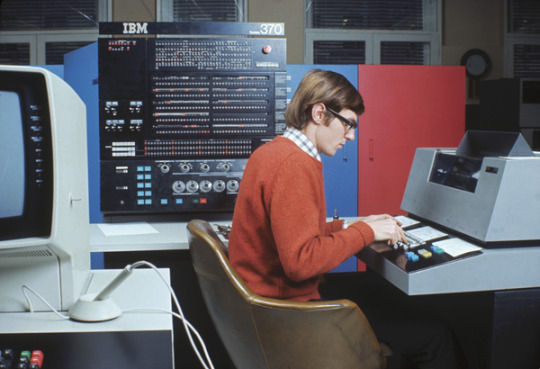
Now for IBM 1620 or CADET! Honestly need to research more into this one but she's very fun.
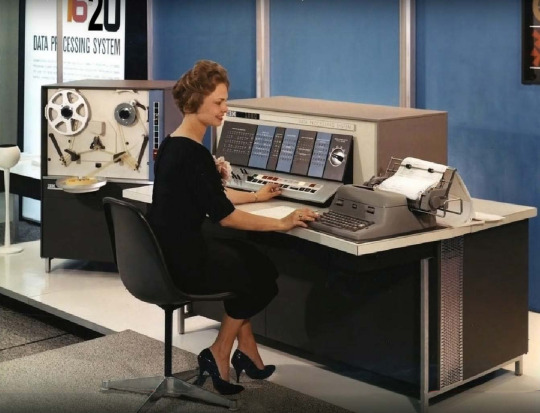
Now Maddida is a little wild, she's very much all over the place and curious about everything. I always saw her design with messy hair, a silver hat, and a flower hairband because of the pieces of the computer.
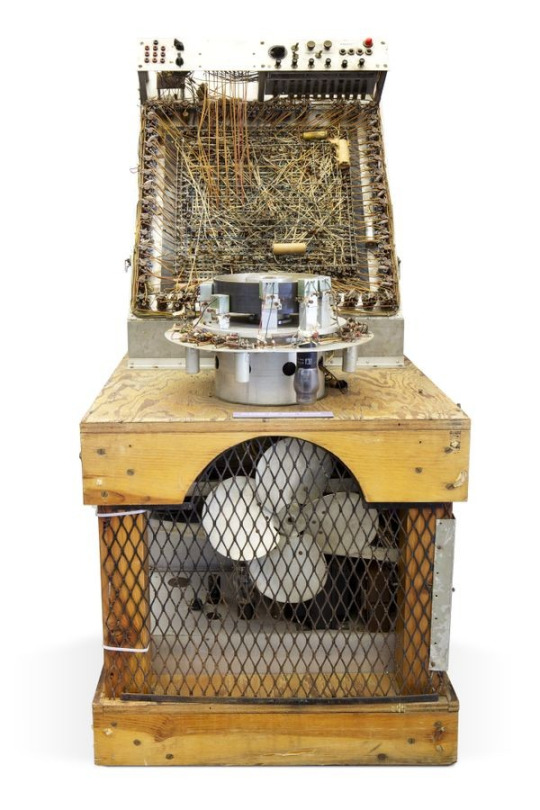
Now for a kind of famous one again, the Illiac! Illiac was the first computer to actually write music! Her twin is Ordvac and the music she made can be found below, played by an orchestra!
youtube
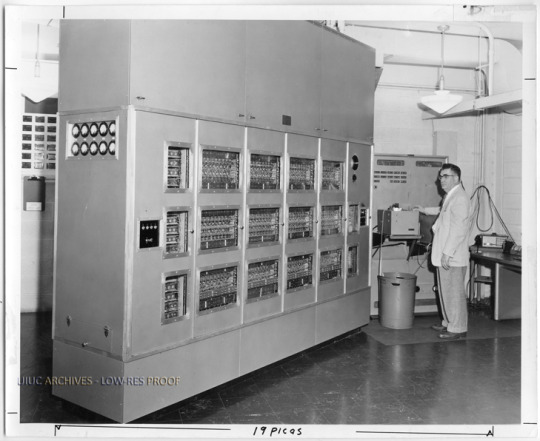
That's all I've decided for now but there will be more later!
11 notes
·
View notes
Photo
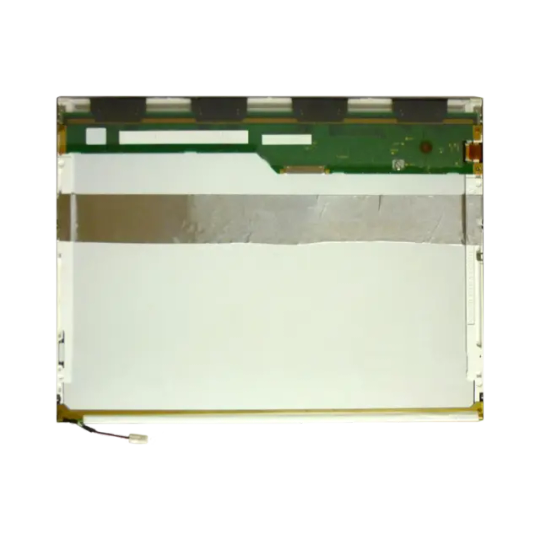
12.1" 1024x768 XGA 7 Panel Laptop Screen ORIGINAL MODEL NUMBER 11P8224, 121LCD, 13N7095, 13N7096, 42T0342, 42T0343, 92P6754, 92P6755, EC003G01, IAXG02C, LP121X05, LP121X1, LTN121XA, LTN121XF, LTN121XJ, LTN121XJ-L07, N121X4, N121X5, N121X5-L01, N121X5-L02, N121X5-L03, N121X5-L04, N121X5-L06, N121X5-LO6, TM121XG-02L03 SUITABLE MODEL Acer TRAVELMATE 210 370 371 380 381 382 520 C200 C204 C210 Apple IBOOK A1005 A1054 A1133 G3 G4 M6497 M7692LL/A M7698LL/A M7720LL/A M7721LL/A M8520LL/A M8597LL/C M8599LL/C M8600LL/A M8860LL/A M9426LL/A Apple IBOOK G3 600MHZ 700MHZ A1005 M6497 M8620LL/A M8758LL/A M8861LL/A M9018LL/A Apple IBOOK G4 1.2 GHZ 1.33 GHZ A1054 A1133 IAXG01B M9164LL/A M9623LL/A M9846LL/A Apple IBOOK GRAPHIC M7720LL Apple POWERBOOK G3 G4 Apple POWERBOOK ALUMINUM G3 G4 Apple POWERBOOK G4 A1010 A1104 M8760LL/A M9007LL/A M9008LL/A M9183LL/A M9184LL/A M9690LL/A M9691LL/A Apple POWERBOOK G4 ALUMINUM 1.5 GHZ A1010 A1104 ASUS M5 M5000 M52 M5200 M5600 S5 U5 Z33 Z3300 Compaq ARMADA 5200 5233 7300 7370 7380 7400 7700 7750 M300 Compaq EVO N400 N400C N410 N410C Compaq PRESARIO 1000 1065 1070 1075 1200 12XL 14XL 1600 1610 1620 1635 1640 1681 16XL 1900 1905 1906 1910 1915 1922 1925 1926 1927 1928 800 80XL Dell INSPIRON 1000 2100 300M X200 Dell LATITUDE C400 D400 D410 D430 L400 X200 X300 Fujitsu Siemens FMV-BIBLO NB10A Fujitsu Siemens LIFEBOOK 530T 535T 555T 565TX 585TX 675TX 690TX B5010 B5020 B6000 B6110 B6120 B6210 B6230 B8250 I4170 P8010 S4542 S4546 S4562 S4572 ST5020 T3000 T3010 T4010 T4020 T4200 T4210 T4215 T4220 Fujitsu Siemens STYLISTIC ST5000 ST5010 ST5011 ST5022 ST5030 ST5032 ST5100 ST5112 Gateway 200STM Gigabyte N203 N211 HP NC4400 TC4000 TC4200 TC4400 HP BUSINESS NOTEBOOK NC4000 NC4010 NC4200 NC4400 HP BUSINESS TABLET PC TC4200 TC4400 HP OMNIBOOK 2000 2100 500 5500 5700 900 XE2 XE3C HP PAVILION N3400 N3402 XU100 XU155 ZU1155 ZU175 IBM THINKPAD X20 X21 X22 X23 X24 X30 X31 X32 X40 X41 X60 X61 Lenovo THINKPAD X200 X60 X60T X61 LG X50 X51 Samsung Q20 Q25 Sony VAIO PCG PCG-672 PCG-705 PCG-707 PCG-717 PCG-719 PCG-723 PCG-729 PCG-731 PCG-735 PCG-737 PCG-745 PCG-747 PCG-R505 PCG-R600 PCG-V505 PCG-Z50 PCG-Z505 PCG-Z600 Sony VAIO VGN VGN-G1 VGN-G11 VGN-G2 VGN-G21 VGN-Y18 VGN-Y70 Toshiba DYNABOOK C4100 C4110 C4120 C7 C8 C9 CX CX1 S20 S21 Toshiba DYNABOOK SS 1600 1610 1620 16XX 2000 2010 2100 2110 2120 3500 4000 M10 M11 M3 MX S20 S21 S4 S5 S6 S7 S8 S9 SX Toshiba PORTEGE 2000 2010 3005 3500 3505 4000 4005 4010 4101 A100 A200 A605 M100 M200 M300 M400 M405 R100 R200 R205 R500 Toshiba SATELLITE 35 4000 4010 4030 4060 4070 4080 500CS Toshiba SATELLITE PRO 4300 440CDT 455CDT Toshiba TECRA 530CDT 550CDT 720CDT 730CDT
#REPLACEMENT_SCREEN#COMPUTERS#LAPTOPS#1024_X_768#12.1_INCH#121LCD#COMPONENT#REPLACEMENT_LAPTOP_SCREEN#XGA
0 notes
Text
Un día como hoy (22 de octubre) en la tecnología

El 22 de octubre de 1959, IBM presenta su modelo 1620 y presentada como computadora científica barata. (Algunas fuentes citan la fecha como 21 de octubre) #retrocomputingmx #ibm1620
1 note
·
View note
Text
IBM Computer at IIT Kanpur in 1963
An IBM 1620 computer arrived in IIT Kanpur in August 1963 by plane at Chakeri airport at Kanpur, and from there it was taken to the institute by bullock carts with inflated tyres, because bringing it by truck, the truck's vibration on the bad roads of Kanpur could damage it's electronic circuits. When it was brought in, the door of the IIT Kanpur computer centre was too small to take in the machine, so one of the walls was broken and then the computer was installed.
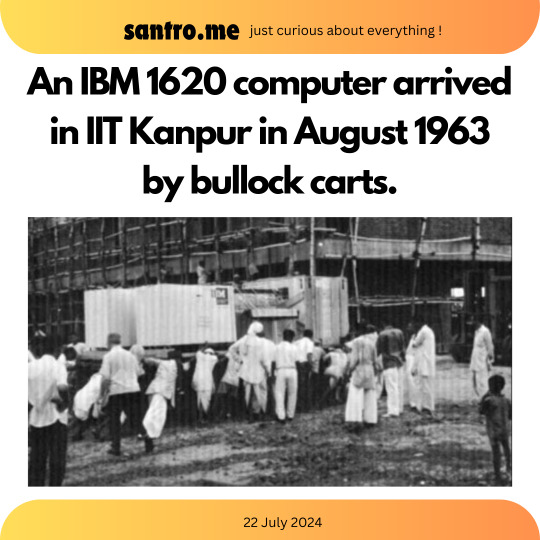

1 note
·
View note
Photo

IBM / The IBM 1620 for Engineering and Science, Civil Engineering / Printed Matter / 1959
#ibm#the ibm 1620 for engineering and science#civil engineering#printed matter#1959#graphics#typography
91 notes
·
View notes
Text
The Mayflower Autonomous Ship holds lessons for creating better A.I.
The Mayflower Autonomous Ship holds lessons for creating better A.I.
The Mayflower Autonomous Ship holds lessons for creating better A.I. | Fortune You need to enable JavaScript to view this site. Source link
View On WordPress
#1620#400th anniversary#A.I. captain#Ai#AI regulation#artificial intelligence#Atlantic crossing#Atlantic Ocean#autonomous ship#boating#Brett Phaneuf#Don Scott#England#eye on a.i.#IBM#machine learning#marine science#MAS#MAS 400#massachusetts#Mayflower#Mayflower Autonomous Ship#New England#New World#ocean science#Pilgrims#plymouth#Plymouth Harbor#Promare#Sailing
0 notes
Photo

The IBM 1620 Data Processing System - 1962.
54 notes
·
View notes
Photo

IBM / The IBM 1620 for Engineering and Science, Civil... https://ift.tt/j16qDIP -> Telegram Design Bot
41 notes
·
View notes
Text

A nurse at an experimental nurse's station tests an IBM 1620 for use at the Akron Children's Hospital, Akron, Ohio, 1966.
656 notes
·
View notes
Quote
"La gente dice que deberíamos dejar un planeta mejor para nuestros hijos. La verdad es que deberíamos dejar unos hijos mejores para nuestro planeta"
Clint Eastwood

Es un actor, director, productor, músico y compositor estadounidense, nacido en mayo de 1930 en San Francisco California.
Es hijo de un trabajador de la metalurgia y de una empleada de una fabrica de IBM, tiene ascendencia inglesa, irlandesa, escocesa y holandesa, sus descendientes llegaron a América en 1620.
Su familia cambió de residencia en varias ocasiones en busca de trabajo, y finalmente se establecieron en Piedmont California en donde estudió el Junior High School.
Clint Eastwood tuvo numerosos empleos como socorrista, repartidor de periódicos, empleado de tienda, bombero forestal y caddie de golf. Cuando la guerra de Corea fue reclutado por el ejército y fue socorriste e instructor de natación durante su servicio militar.
Según su biografía oficial, un hombre que tenia contactos en la industria del cine, consiguió colar a Eastwood en los estudios Universal para una audición, le recomendaron asistir a clases de interpretación y en 1954 consiguió su primer contrato por 100 dólares a la semana.
Su primer papel fue una breve audición como un asistente de un laboratorio, y durante tres años interpretó pequeños papeles en películas de escaso presupuesto.
A finales de 1963, aceptó un contrato por 15,000 dólares y un auto para filmar un western titulado “por un puñado de dólares”, en donde resultó ser todo un éxito en Europa. Rodada en España y dirigido por el entonces desconocido Sergio Leone. Esto convirtió a Eastwood en una estrella en Europa, y la trilogía de Leone conocida como “El bueno el malo y el feo” llegó a las pantallas norteamericanas a través de United Artists y siendo un éxito en taquilla en el año 1967.
Desde entonces Eastwood ha participado en mas de cincuenta películas, ya sea como actor, director, productor o compositor, y se estima que sus películas han recaudado mas de 1,710 millones de dólares sólo en los Estados Unidos, casi 37 millones por película.
A lo largo de su carrera ha recibido numerosos premios y distinciones, entre los que destacan premios Oscar, Globos de Oro, premios del sindicato de directores de los Estados Unidos entre otros muchos. Es una de las dos personas junto a Warren Beatty en ser nominado dos veces a mejor actor y mejor director por una misma película, y en 2005 se convirtió en uno de los pocos directores que han dirigido dos filmes ganadores del Oscar a mejor película, y a sus 74 años en el director mas anciano en ser galardonado con el premio de las Academia de las artes y ciencias cinematográficas.
Fuente Wikipedia.
6 notes
·
View notes
Text
Ten Innovators to Watch in 2021
https://sciencespies.com/nature/ten-innovators-to-watch-in-2021/
Ten Innovators to Watch in 2021

This past year left us with no shortage of incredible innovations, chief among them Covid-19 vaccines. Following a harrowing 2020, we’re excited to see how innovators continue to push the envelope and bring forth what they think the world needs. From celebrating and honoring black history to improving the mental health of K-12 students, we’re keeping our eyes on these ten groundbreakers as they share their visions with the world.
Chicken-less Egg Connoisseur Arturo Elizondo

Arturo Elizondo
(Clara Foods)
“Like any good Mexican, I had two eggs for breakfast every morning, and like any good Texan I had my barbeque every Sunday,” says Arturo Elizondo. But when he learned about the devastating impacts that livestock has on the environment, he set out to find a better, more sustainable way to produce animal protein. In 2014, he co-founded Clara Foods with cell biologist David Anchel with a mission to take animals out of animal proteins.
Similar to how brewers use yeast to convert sugar into alcohol for beer, Clara Foods uses yeast and sugar to produce animal protein. Specifically, Elizondo and his team are working to produce egg proteins—one of the most challenging to find alternatives for. One trillion eggs are consumed across the globe each year, but it takes a whopping 600 gallons of water to produce a dozen eggs, he says. Since they’re so versatile and globally loved, Clara Foods is offering a cleaner alternative so that people can still enjoy eggs in all their culinary forms without the tremendous environmental impact.
Clara Foods has been knee-deep in research and development for the last six years, but the company is officially coming out of their “eggshell” in 2021 when they launch the world’s first egg protein made without a chicken, Elizondo says.
Problem-Solving Wunderkind Gitanjali Rao

Gitanjali Rao
(Gitanjali Rao)
As a 15-year-old, Gitanjali Rao is the youngest innovator on our list, but she’s certainly one to watch. She’s already tackling some of the greatest problems affecting current generations: lack of access to clean water, opioid addiction and cyberbullying.
After hearing about the water crisis in Flint, Michigan, Rao was shocked to learn that people in the United States and beyond still don’t have access to safe, clean water. In response, she invented Tethys—a sensor that can detect lead in water and upload results from the water sample to an app, allowing users to quickly and affordably see if water is safe to drink. She’s also worked to address the opioid crisis by developing Epione, a way to diagnose prescription opioid addictions for patients at the onset of addiction, after hearing about a family friend who developed an addiction after a car accident. And to address cyberbullying—a problem especially relevant to her age group—Rao developed Kindly, an artificial intelligence-powered software that detects hurtful or harmful messages and then prompts users to rephrase what they send. Her thoughtful, problem-solving innovations earned her the title of TIME’s 2020 Kid of the Year.
“My motivation to solve problems in society started in a very simple manner: to solve problems that we face on a daily basis,” she says. “I try my best to understand them and look for ways to address them. I am not always successful, but the few times [I’ve succeeded,] I feel like I have contributed in some way.”
To inspire others to innovate, Rao has connected with about 35,000 students across four continents and has more events planned in the coming months. As she moves forward in 2021, Rao says she has more ideas in the works and that she’ll continue developing her current innovations as she searches for the partners to help her out.
Storytelling Composer Barron Ryan

Barron Ryan
(Daniel Charles Folkers)
On May 31, 1921, a mob of white residents attacked the Greenwood District, a predominantly black neighborhood, in Tulsa, Oklahoma, in what’s known as the Tulsa Race Massacre. The attack—one of the worst acts of racial violence in American history—continued through the next day as the mob killed more than 300 black Tulsans, displaced 10,000 others and burned more than 35 city blocks to the ground.
To commemorate the 100-year anniversary of the Tulsa Race Massacre, Chamber Music Tulsa commissioned composer and performer Barron Ryan to tell the story of the tragedy through a piano trio. As a Tulsa native, Ryan says that it’s important for him to tell this story—a story that needs to be remembered. “It’s an integral part of who I am, and I’m honored to do it,” he says.
“Music can tell a story without using words, [and it] has an unparalleled ability to communicate” Ryan says, which is what he aspires to do with his trio. In composing the piece, he looked through firsthand accounts of the massacre. He read about a woman who hid with her daughter and read psalms as the attack raged on. Psalm 88:3 spoke to Ryan, and it ultimately inspired the melody. One of the verses reads, “My soul is full of troubles,” which Ryan borrowed as the title of his trio.
He hopes that his music inspires people to reflect on the Tulsa Race Massacre and to be courageous—to do what’s right and not simply what is easy, he says. “I’m hoping that it’s well received, and that we remember our history as Tulsans and learn the right lessons and not repeat something like this again.”
Transit Trailblazer Andrea Ponti
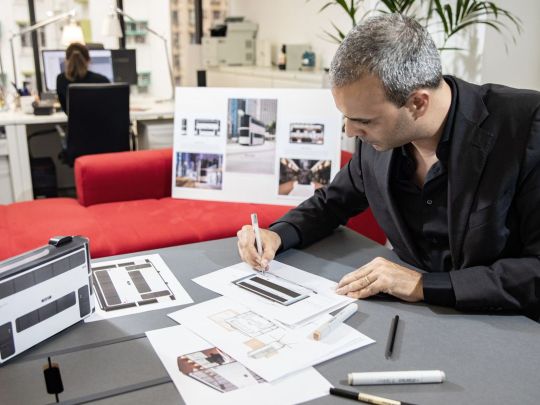
Andrea Ponti
(Andrea Ponti)
The Covid-19 pandemic brought public transportation to a screeching halt as people who had the means to travel in their own private vehicles opted to do so. Andrea Ponti, the founder and director of Ponti Design Studio, took the opportunity to re-think and re-plan how we get around. Inspired by social distancing, he developed Island, an electric tram designed for a post-pandemic Hong Kong, the city where he resides.
“When the pandemic took over Hong Kong, many people turned to private transport causing a dramatic increase in traffic, pollution and noise,” he says. “What makes Island attractive is that it helps to solve all those problems. The bottom line is technology needs good design in order to be efficient and accessible to most people, and I think Island might be an example of that.”
Instead of sitting in rows, the tram’s seats are organized in circles, or “islands,” seating people with their backs towards each other so they can look out the window instead of facing others. “To me that is a safer way to commute and a fun way to take in the city sights and see Hong Kong from a different viewpoint,” he says. Plus, the tram is electric and driverless, making it eco-friendlier and more efficient.
“As a designer I really like the challenge of re-imagining products and services that we often take for granted and that can be greatly impacted by social changes—in this case re-designing trams at the time of social distancing in a metropolis like Hong Kong where social distancing is hard to practice,” he says.
Ponti started developing Island in March 2020 and has since modeled the tram and produced a number of prototypes. Moving forward in 2021, he is working to scale the protypes, move into the testing phase and secure a partner to produce Island.
Honoring Black History with Anitra Belle Henderson
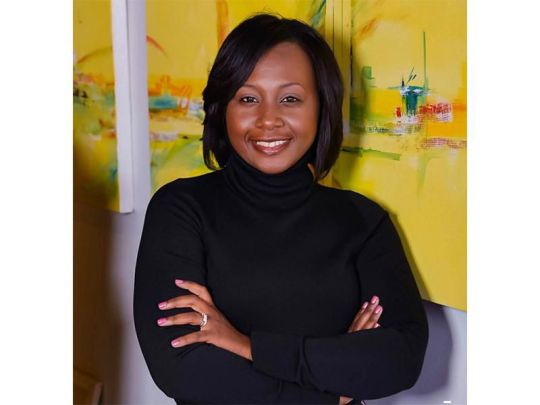
Anitra Belle Henderson
(Lemaris Alston)
In 1860, a plantation owner smuggled in a shipload of 110 African people to Alabama on the Clotilda, the last known slave ship to arrive in the United States, decades after the U.S. had banned the importation of enslaved people. When enslaved people were freed in 1865, survivors of the Clotilda couldn’t afford to return to Africa, so they founded Africatown instead, a bustling town rooted in their homelands and cultures.
After years of searching for the long-lost Clotilda, a team of historians and archaeologists finally discovered it at the bottom of Alabama’s Mobile River in 2019. Now, the City of Mobile will open a heritage house in the summer of 2021 to tell the story of the Clotilda‘s survivors and of Africatown.
“We are excited to help the community tell their story,” says Anitra Belle Henderson, the executive director of communications and external affairs for the City of Mobile and the lead on all the Africatown projects. “Our goal is for visitors to understand more about those who were enslaved. They have a name and a story.”
The heritage house is designed to be an immersive experience. Visitors will feel the waves of the ocean like the enslaved people felt on their voyage, read stories of the slave trade and be introduced to the survivors of the Clotilda. They’ll also be able to visit Africatown, where many descendants of the Clotilda‘s survivors still reside.
“Each detail of the heritage house was designed with reverence to the ancestors, descendants and the community,” Belle Henderson says. “Those who are curious about African culture can visit an African community on American soil—a community that was built with hope and promise.”
“The many stories show the diverse brilliance of black people,” she says. “Since the [discovery] of the Clotilda there has been a new excitement in the community. Educating people about Africatown’s past will definitely create a bright future for a community that so deserves the attention it is receiving.”
Nautical Visionary Brett Phaneuf

Brett Phaneuf
(IBM)
In April 2021, the Mayflower Autonomous Ship, one of the world’s first full-sized self-navigating ships, will set sail from the United Kingdom’s Plymouth Harbor and traverse the Atlantic Ocean to Cape Cod, Massachusetts. It will retrace the voyage made by the original Mayflower in 1620 that brought Pilgrims to New England, but instead of looking back at 400 years of history, it represents what the next wave of nautical advances will look like.
The Mayflower Autonomous Ship is a collaboration between the marine research organization ProMare and IBM, which developed the ship’s artificial intelligence systems that will allow it to navigate unassisted across the ocean. The Mayflower team is hoping to revolutionize ocean research by creating an affordable option for scientists to study the ocean without necessarily being on board a ship. Without needing to worry about the logistics for housing people on board, like sleeping, eating and sanitation, the ship can accommodate more technology, like cameras and sensors, and stay out at sea longer.
“If it works as designed, then it will substantially drive down the cost of collecting data at sea,” says Phaneuf, a co-founder and co-director of the Mayflower Autonomous Ship project. “This will lead to [a] better understanding of our oceans and climate.”
Phaneuf’s biggest hope for the Mayflower is that it makes it across the ocean and sparks the conversation about how autonomous ships can be used to study the high seas. During this first voyage, the ship will collect meteorological and oceanographic data as well as water samples to study microplastic distribution.
Student Advocate Samantha Pratt
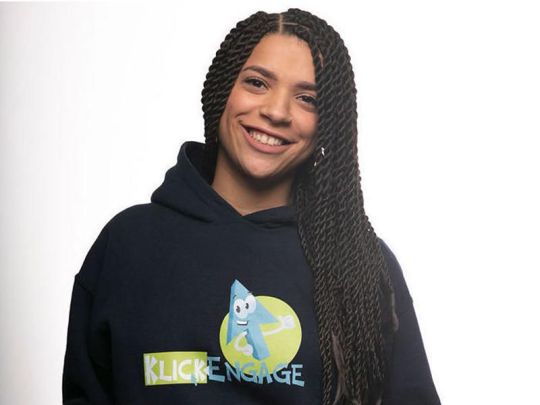
Samantha Pratt
(Samantha Pratt)
Two thirds of all U.S. youth face at least one trauma by age 16 that can stem from poverty, racism, domestic or community violence, or substance abuse, says Samantha Pratt, the CEO and founder of KlickEngage.
“Students carry heavy emotional backpacks into the classroom every day that they cannot put down,” she says. “I was teaching high-need students in an overcrowded classroom and could not check in with each of my students every day in order to address their issues. Out of urgent need, I decided that I had to find a way to streamline student self-report.”
To do so, Pratt designed KlickEngage—an app that allows users to self-report their mental state each day by completing a two-minute survey. The app, which has reached thousands of kids,then provides students with targeted coping mechanisms while delivering real-time data to educators so that they can identify and supports students carrying heavy emotional loads, Pratt says. Schools have the ability to make a huge impact for students by providing health services and resources, but they’re often limited and underfunded.
“By directly serving students, teachers and schools, we limit the impacts of adverse experiences on school engagement in early years of education so that there is a higher likelihood of student success in later years, breaking the cycle of trauma and poverty,” Pratt says.
Students are still facing adversities, plus the compounded issues brought on by the Covid-19 pandemic, such as unemployment, food insecurity and fear-based anxiety, Pratt says. Since KlickEngage is able to be adapted for a physical or virtual learning environment, it can help educators check in with students, even from a distance. In 2021, KlickEngage is planning to grow its impact and reach more classrooms.
Pandemic-Inspired Architects Jing Liu and Florian Idenburg
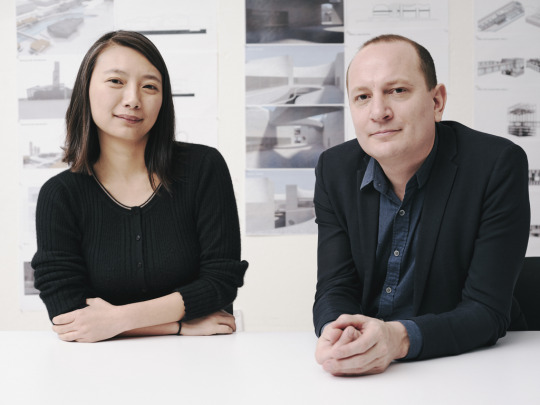
Jing Liu and Florian Idenburg
(Vincent Tullo)
In 2020, homes transformed into all-in-one offices, gyms, daycares, classrooms, vacation destinations and restaurants as people’s lives became confined to their residences. As a result, people noticed just how important their home environment is to their mental and emotional wellbeing, say Jing Liu and Florian Idenburg, the founding partners of SO–IL, an architecture and design firm.
At the outset of the Covid-19 pandemic, Liu and Idenburg were in the beginning stages of designing a new 30-unit residential building in Brooklyn. They also found themselves adjusting to living and working from home with their two daughters, and they say that experience helped shape the design for the new building, to be completed in 2022. Now that people are home all the time, Liu and Idenburg needed to create a space that was both multi-functional and comfortable for residents. For example, they moved bedrooms to opposite sides of the apartment to muffle noise and distractions, which are typically clustered together. They also incorporated multiple outdoor spaces for each unit, creating easy access to fresh air and sunshine.
The pandemic has highlighted what people really need in their homes, and architecture trends in the future will reflect that, they say. “The main lesson to take away is that the lifespan of a building will be longer than the interval between pandemics,” they say. “From a sustainability standpoint, we should endeavor to build buildings that last ‘forever.’ It means we need to design for future pandemics.”
Mosquito-Trapping Mastermind Kennyjie

Kennyjie
(Eric Lau)
When industrial designer Kennyjie (he prefers to go by just his first name) was 12 years old, he contracted dengue fever—a flu-like disease transmitted by mosquitos—while living in Indonesia. “Being able to afford long hospital care, I was one of the privileged kids who walked out alive,” he says. Mosquito-borne disease prevention has remained an issue close to his heart, and it’s the driving force behind his new innovation, Quito.
While visiting Bali, Kennyjie noticed that the mosquito prevention tactics were inconvenient and ineffective, so he set out to design his own. Quito, which made the International Top 20 for the James Dyson Award in 2020, uses a simple chemical reaction to produce carbon dioxide and an artificial human odor to attract mosquitoes, and then it vacuums them into a chamber. By luring mosquitoes in instead of repelling them, Quito reduces their local population and the chance of disease transmission. It’s designed to be placed in tropical resorts to lessen the likelihood of an outbreak as people travel in and out of the region.
Kennyjie traveled through multiple Indonesian villages to ensure that Quito’s design is informed by the local culture, economy and climate so that it fits into the “geographical context in which it is needed,” he says. This year, Kennyjie will continue running more tests from his home in Melbourne, Australia, until international borders are open and he can start pilot tests in Indonesia.
#Nature
1 note
·
View note
Text
Computer Fundamentals
Nowadays, computers are making jobs easier for people.
Therefore, it is very necessary to have knowledge of Computer basics. In this article, we have covered all the basics of the computer such as what is a computer, definition of computer, basic functions of a computer, generations of computer, classification or types of computer, advantages and disadvantages of a computer, etc.
What is Computer
In 1640, the term ‘Computer’ was initially referred to as ‘ one who calculates ‘. Later in 1897, it was called the ‘ Calculating Machine ‘. In 1945, it was indicated as ‘ programmable digital electronic computer ‘ which is now called a ‘computer’.
What is Computer definition?
“ A computer is a programmable electronic machine designed to take input, perform prescribed arithmetic and logical operations at fast speeds, and provide the output of these operations. “
Basic Functions of Computer
There are four basic functions of the computer: Input, Processing, Output, and Storage.
Generations of Computer
There are five generations of the computer, which are listed below with approximate period:
First Generation (1946–1959)
- Electronic Valves (Vacuum Tubes). — ENIAC, EDVAC, UNIVAC, etc.
Second Generation (1959–1965)
- Transistors. — IBM 1620, IBM 1400 and 7000 series, CDC 3600, etc.
Third Generation (1965–1971)
- Integrated Circuits (ICs). — IBM 360, IBM 370, PDP, etc.
Fourth Generation (1971–1980)
- Very Large Scale Integrated (VLSI) Circuits. — DEC 10, STAR 1000, CRAY-1 and CRAY-X-MP, etc.
Fifth Generation (1980 — Present)
- Ultra Large Scale Integration (ULSI), Artificial Intelligence (AI) and Parallel Processing Hardware. — Desktop, Laptop, NoteBook, ChromeBook, and UltraBook, etc.
Uses of Computer
Here, we have explained the most important uses of the computer system:
* can store important data. * can communicate with people around the world. * used for the educational system. * used for office works like data entry, support, development, etc. * used in banking, finance, and marketing. * used in government sectors. * used in sports. * used for Press and publishing. * used for entertainment.
Classification of Computer
According to usage and functionalities, computers can be classified as:
Analog Computer
Digital Computer
Hybrid Computer
Types of Computer
Supercomputer
Mainframe Computer
Microcomputer
Mini Computer
Advantages and Disadvantages of Computer
Read more at TutorialsMate.
Read Complete Tutorial at https://www.tutorialsmate.com.
4 notes
·
View notes
